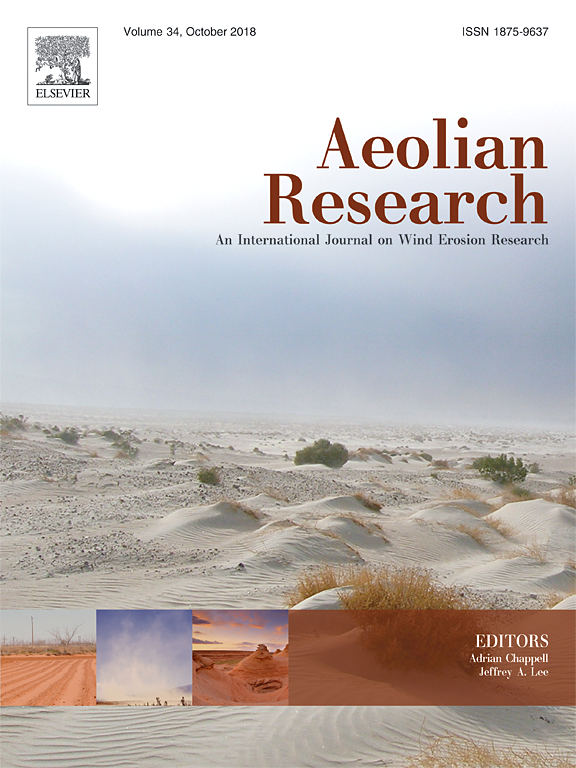Ver ítem
- xmlui.general.dspace_homeCentros Regionales y EEAsCentro Regional La Pampa - San LuisEEA AnguilArtículos científicosxmlui.ArtifactBrowser.ItemViewer.trail
- Inicio
- Centros Regionales y EEAs
- Centro Regional La Pampa - San Luis
- EEA Anguil
- Artículos científicos
- Ver ítem
Efficiency of Big Spring Number Eight (BSNE) and Modified Wilson and Cook (MWAC) samplers to collect PM10, PM2.5 and PM1
Resumen
The internal efficiency of Big Spring Number Eight (BSNE) and Modified Wilson and Cook (MWAC)
samplers for trapping PM10, PM2.5 and PM1 were tested in a wind tunnel, at two wind speeds (3.0
and 6.8 m s 1) in the saltation zone (SAZ) and the suspension zone (SAZ). PM concentrations measured
in the inlet and the outlet of both samplers were correlated and the slopes of fitting equations were used
for calculating sampling efficiencies. Results showed
[ver mas...]
The internal efficiency of Big Spring Number Eight (BSNE) and Modified Wilson and Cook (MWAC)
samplers for trapping PM10, PM2.5 and PM1 were tested in a wind tunnel, at two wind speeds (3.0
and 6.8 m s 1) in the saltation zone (SAZ) and the suspension zone (SAZ). PM concentrations measured
in the inlet and the outlet of both samplers were correlated and the slopes of fitting equations were used
for calculating sampling efficiencies. Results showed that BSNE efficiencies ranged from 12% to 32% for
PM10, from 0% to 19% for PM2.5 and from 0% to 12% for PM1. The BSNE’s efficiency decreased with
decreasing particle sizes in SAZ and SUZ at both wind speeds as a consequence of the very low deposition
velocity of the finest size particles. The BSNE’s efficiency increased with increasing wind speed in SAZ for
PM10 and PM2.5 and in SUZ for PM2.5. The MWAC’s efficiency ranged from 1% to 20% for PM10, from 0%
to 15% for PM2.5 and from 0% to 16% for PM1. The MWAC efficiency was 0% for PM10, PM2.5 and PM1 in
the SUZ at 3 m s 1 and for PM2.5 and PM1 in the SUZ at 6.8 m s 1. These results provide evidence that the
efficiency of BSNE and MWAC for trapping PM10 change with wind speed and position of the sampler.
Results also show that BSNEs and MWACs can potentially be used for PM10 emission studies but more
research is needed in order to understand and improve their efficiency.
[Cerrar]

Autor
Mendez, Mariano Javier;
Funk, Roger;
Buschiazzo, Daniel Eduardo;
Fuente
Aeolian research 21: 37-44. (June 2016)
Fecha
2016-06
Editorial
Elsevier
ISSN
1875-9637
Formato
pdf
Tipo de documento
artículo
Palabras Claves
Derechos de acceso
Restringido
 Excepto donde se diga explicitamente, este item se publica bajo la siguiente descripción: Creative Commons Attribution-NonCommercial-ShareAlike 2.5 Unported (CC BY-NC-SA 2.5)
Excepto donde se diga explicitamente, este item se publica bajo la siguiente descripción: Creative Commons Attribution-NonCommercial-ShareAlike 2.5 Unported (CC BY-NC-SA 2.5)

